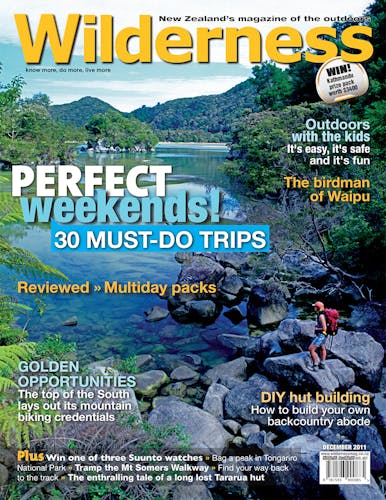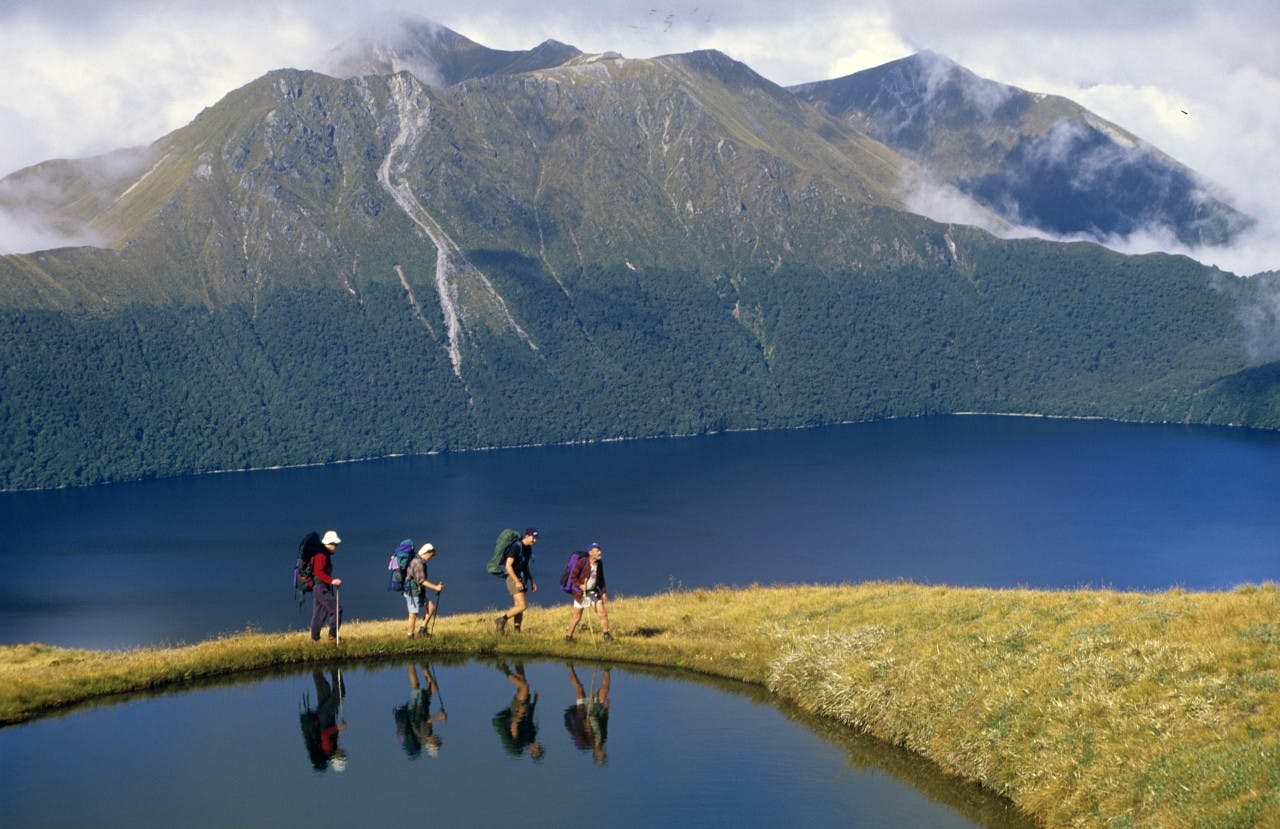Hunter Mountains, Fiordland National Park
The Hunter Range in southern Fiordland’s eastern margin provides excellent accessible remote experiences and some really interesting geological phenomena. Situated between Lakes Manapouri and Monowai, it offers a range of tracked routes and untracked bush and tops travel. A selection of huts means there are options whatever the season and whatever the weather.
1. Hope Arm Hut
Hope Arm Hut is situated on the southern shore of Lake Manapouri. A 2-3hr walk from Manapouri, it would make a good introductory trip for families (unless you’re unlucky enough to strike the curse of lakeside huts – booze-cruising power boaties). It’s also popular with kayakers and a waypoint on the northern approach to Mt Titiroa.
2. Mt Titiroa
This stunning 1715m peak is well known for its fine quartz gravel that gives the mountain the appearance of having year-round snow. The rock formations scattered around the upper slopes, especially the northern side, are a highlight of the climb. It can be approached via Hope Arm and the Garnock Burn and then through untracked bush, usually with a high camp below the bushline. An alternate route is from North Borland Hut. If you can organise the logistics, a traverse makes a great three day trip.
3. North Borland Hut
This four bunk hut has taken a journey in recent years. It was moved from a flood prone spot to a new location a kilometre down stream and across the river. It makes a good jumping off point for a climb of Mt Titiroa or a destination for a winter weekend away from the crowds.
4. Middle Borland valley
Something for those who like to get off the beaten track. A day or two following old markers will get you to the head of this valley, where a crossing to the Garnock Burn is possible for trampers with good off-track skills. A return via a crossing of Mt Titiroa would make a nice round trip.
5. Borland Road
Paradoxically, this road, which was built for the construction of the power line from West Arm is both a blight on the landscape and a bonus for access into the heart of the range. In summer, it’s usually passable with care in ordinary cars, particularly as far as the saddle. It provides access to the South Borland, Mt Eldrig and the tops above Borland Saddle, as well as into the rugged western tributaries of the Grebe River. It’s also recognised as a mountain bike route.
6. Borland Lodge
The lodge, run by the Borland Lodge Adventure and Education Trust, started life as a hostel for road and power line workers. Since then, it’s provided outdoor education experiences to thousands of Southland school children. It makes a good base for exploring the area. Accommodation in cabins is available for casual visitors and there are campervan sites.
7. Green Lake tops
A short track leads from Borland Saddle to the bushline and is a must-do for anyone without the time to go through to Green Lake. From there, straightforward untracked tussock travel leads to a point overlooking the lake. A detour can be made to Mt Burns, while a couple of options exist for descending to the lake.
8. Green Lake
What is believed to be the largest documented terrestrial landslide on earth formed this lake, which explains the confused topography to the north and west. Some 27km³ of material fell off the mountainside around 13,000 years ago. There’s a 12 bunk hut on the shores, accessible by tracks from Lake Monowai and the Borland Road, or across the tops.
9. Historic Clark Hut
Built by deerstalker Archie Clark, this hut is a great example of a slab-construction hut. Its historic status means it’s not available for overnight stays, although the less appealing Clark A-frame Hut one kilometre away provides accommodation.
10. Rodger Inlet Huts
A few hours walk on a bush track from the road end at Lake Monowai brings you to a new DOC six bunk hut. The older hut beside it is one of only two surviving Department of Internal Affairs deer cullers’ huts in Fiordland National Park. The huts can also be reached by a 9km kayak journey, which would give ample opportunity to see the skeletal trees in the shallows, which serve as a stark reminder to the raising of the lake for a hydro-electric scheme in the 1920s.








